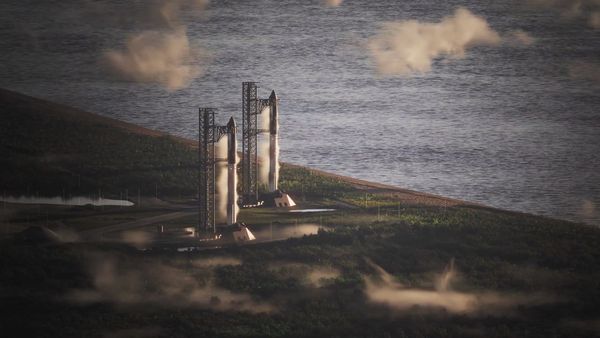The world experienced over 60 armed conflicts in 2024, a “historically high” number according to scholars in the Department of Peace and Conflict Research at Uppsala University. Consequently, the risks faced by multinational companies (MNCs) operating in conflict-torn regions, especially the Middle East and North Africa, have significantly intensified. Israel’s recent airstrikes targeting Iran’s nuclear facilities are another reminder of the escalating violence and instability that are causing loss of life and threatening businesses.
In response to the increase in international crises and armed violence, the United Nations Global Compact has urged companies and investors to adopt more responsible practices in conflict-affected and high-risk areas, so as to position themselves as crucial actors in providing peace and stability.
The role of business in conflict zones
The debate over the role of business in conflict zones is not new but is gaining traction among scholars and practitioners alike. Questions include whether companies can leverage their influence to support peacebuilding efforts, and whether some firms may exploit unstable environments to maximize profit and thus exacerbate conflict.
MNCs tend to respond to conflict by adopting one of the following strategies:
1) an exit strategy (ie withdrawing from a conflict zone)
2) a business-as-usual strategy that merely complies with changing local conditions and regulations
3) a take-advantage strategy of profiteering from a war economy
4) or a proactive engagement strategy aimed at contributing to public security
But, if an MNC decides to stay and continue operating in a conflict zone, it can hardly be guided by a single strategy. Moreover, since strategies evolve in response to unfolding events, their adaptation may lead to unforeseen consequences and possibly far-reaching negative impacts.
This is clearly demonstrated by our recent study on the case of Lafarge in Syria. Lafarge Cement Syria (LCS), the local subsidiary of the former French multinational construction company Lafarge, continued operating during the Syrian civil war from 2011 until 2014, while most foreign companies withdrew in response to escalating violence and political instability. To maintain production at its Jalabiya plant in northeast Syria, LCS managers established arrangements with various armed groups, including the Islamic State of Iraq and Syria (ISIS) and the al-Nusrah Front (ANF) – “both US-designated foreign terrorist organisations” – providing financial payments called “protection money” and purchasing raw material from suppliers under their control.
The MNC’s stay-at-all-cost strategy in an active civil war zone culminated in a forced withdrawal from Syria – the night before ISIS took full control over the LCS factory – and subsequent, ongoing legal proceedings in France against Lafarge and LCS for alleged financing of terrorism (at least €13 million paid to armed groups including ISIS), violation of international sanctions against Syria, complicity in crimes against humanity, and endangering the lives of others. In early 2024, a French court dropped the charge against Lafarge of endangering the lives of its Syrian employees.
In 2022, Lafarge and its Syrian subsidiary pleaded guilty in a US federal court to conspiring to provide material support to foreign terrorist organisations. Lafarge agreed to pay a $778 million fine. The guilty plea came seven years after “what was originally billed as a merger of equals” between Lafarge and its Swiss rival Holcim. The year after LafargeHolcim, amid a growing scandal over the allegations, renamed itself Holcim Ltd.

A weekly e-mail in English featuring expertise from scholars and researchers. It provides an introduction to the diversity of research coming out of the continent and considers some of the key issues facing European countries. Get the newsletter!
A ‘downward spiral’
In our study, we examined how some Lafarge and LCS managers navigated Syria’s shifting wartime landscape by analysing the relational, informational and financial strategies they used to engage with various non-state armed groups to sustain operations. Our findings reveal that over the four-year period from 2011 to 2014, a series of short-term, cost-benefit decisions produced a “downward spiral” of strategic responses. Rather than ensuring the company’s survival in an active conflict zone, these strategies increased its dependence on regime-connected intermediaries and war profiteers, and entangled it in the darkness of the Syrian war economy. Ultimately, this led to consequences that extended far beyond mere business failure.
Four key factors shaped this downward spiral. The first is the diversity and fluidity of non-state armed actors with whom the company engaged. LCS paid “protection money” to a range of armed groups – including Kurdish military factions, insurgent groups and militias – prior to the emergence of jihadist organisations, particularly ISIS, in the vicinity of its cement factory. Initially, threats posed by jihadist groups were overshadowed by the complex, shifting alliances and rivalries among local actors vying for control over the resources in the region.
The second factor that shaped the downward spiral is the gradual collapse of state authority in Syria, especially in the region near the factory. When the factory began production in 2010, its operations took place in a zone under the control of the Syrian government. This was a certain guarantee of security provided by the regime, which wanted to ensure the continuous payment of LCS local taxes. But after the outbreak of the civil war in 2011, the government started losing control in many parts of the country, including northeast Syria. Faced with this institutional vacuum, LCS managers took security into their own hands by establishing arrangements with various armed groups to safeguard their business.
The third factor is the level of the subsidiary’s exposure to the conflict. At first, the plant’s exposure to violence was low because of its geographical distance from the heart of the conflict. However, by mid-2012, and especially in 2013, fighting intensified close to the factory, which sat near the strategic M4 highway linking eastern Syria to Turkey and Iraq. The highway was a key route used by the company’s suppliers, but also by local rebel and militia groups.
The fourth factor relates to the vulnerability of infrastructure and local supply chains. With $680 million invested in the cement plant’s construction and big hopes for a post-war reconstruction boom in the region, Lafarge was determined to protect its assets and access to critical resources. This imperative, coupled with ambitions to merge with Holcim as early as 2013 (the merger was completed in 2015), drove the company to prioritize continued production, even if it meant aligning with local warlords.
These four factors and their respective dynamics pushed Lafarge and LCS to adopt increasingly unconventional and ethically questionable strategies. In adapting to the unfolding conflict and increasing violence, the company made a series of compromises that ultimately led to negotiations and arrangements with ISIS.
What lessons should MNCs draw from this case?
Lafarge’s dismal experience in war-torn Syria highlights a pattern of “organisational shortsightedness” that often affects MNC managers operating in conflict zones. As security deteriorates, firms may become entangled with local power brokers, adapting incrementally to survive, until they are so embedded that withdrawal becomes impossible. To break this cycle, companies must rigorously assess the potential fallout of their strategies and avoid entanglements with armed factions altogether. Moreover, to survive in conflict zones, MNC subsidiary managers need to gain country-specific knowledge and experience, and consider context complexity and dynamics as constituent elements of their strategies.
Our research serves as a cautionary tale. It warns decision-makers of the dangers of deploying financial and relational strategies in conflict zones that may increase a company’s dependence on non-state armed groups. Such business practices risk compromising objective decision-making and obscuring legal and ethical boundaries and can ultimately backfire. To avoid this, managers should design a responsible withdrawal strategy at the beginning of an armed conflict to ensure employees’ safety. Managers must also adopt ethical and conflict-sensitive practices in strict compliance with the actions for businesses operating in conflict zones recommended by the UN Global Compact.
À lire aussi : Will multinational companies flock to Syria? Maybe, if foreign aid arrives first
We also encourage corporate leaders to develop “critical geopolitical awareness” by gaining more contextual knowledge and integrating a multilevel political risk analysis into their strategies. This would provide them with a deeper understanding of the complexity and dynamics of an armed conflict and the relevant actors they need to engage with or avoid. Only with informed leadership can managers effectively and responsibly navigate the complex and often hazardous landscape of doing business in conflict zones.
Les auteurs ne travaillent pas, ne conseillent pas, ne possèdent pas de parts, ne reçoivent pas de fonds d'une organisation qui pourrait tirer profit de cet article, et n'ont déclaré aucune autre affiliation que leur organisme de recherche.
This article was originally published on The Conversation. Read the original article.







